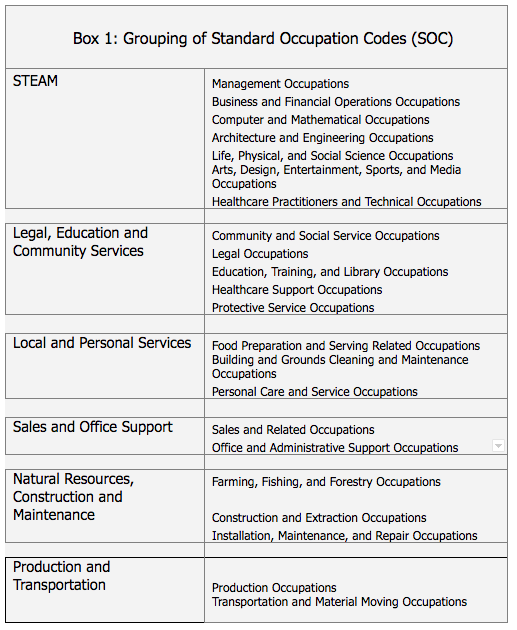Apartment Renters in Tech Far Out-Earn Their Neighbors

- The average incomes of workers vary significantly across occupations and between asset classes.
- Technology workers living in large apartment buildings earn as much as 1.5 times their colleagues in other asset classes, and more than twice than their neighbors in other occupations.
- Income growth was fastest among local services, sales and office support workers.
Income Levels Across Occupation and Asset Class
As the business cycle continues along its record-setting expansion, the U.S. rental market has maintained strong performance across property types. Of course, there are cases of oversupply or overweighting to assets of varying qualities, but these hiccups have largely been locally isolated.
Renters in technology and design jobs (STEAM), an abbreviation of STEM plus the Arts, have consistently grown at a fast clip, while also constituting large shares of renters in apartment buildings. These are also the highest paying jobs in cities, alongside select opportunities within public services. (See Box 1 for occupational groupings and definitions.)
For example, according to the latest Census data, workers employed in STEAM occupations and living in large multifamily properties earned a lofty average income of $87,000. Compare this to the STEAM colleagues in small multifamily and single-family rentals (SFRs) where these workers earn an average of $64,000 and $66,000, respectively.
STEAM workers out-earned their neighbors in other occupations by significant margins. In large buildings, they earned 70% more than the next highest-earning group, public and community services, which earned an average of $51,500. The margin rises to as much as 130% when comparing these STEAM workers to their production and trades employed neighbors with average earnings of $37,000. While these trends directionally hold in small multifamily properties as well, the magnitude of differences is far less.
Small Property Renters Show Steady Income Gains
Over the recent two years of observations, incomes have steadily increased across most job categories as the economic expansion has lengthened. The average personal income of STEAM workers, which has a disproportionate impact on rents, grew by 5.6% among large multifamily residents. STEAM workers in small multifamily and SFR captured comparable wage gains over the same period, notching 5.2% and 5.0%, respectively.
While incomes in personal and office support services grew the most, these jobs represent a diminishing share across all rental classes. This is possibly a symptom of consolidation toward higher paying work within these sectors. Public service jobs, often the least sensitive group to rising or falling wage pressures, measured smaller income gains.
In all, while workers in cities currently benefit from a strong economy, property managers need to be watchful of ongoing labor market changes, especially as technology facilitates an increasing trend of part-time work in the emerging gig economy.

Visit the Chatter blog to read more about the latest trends in multifamily housing. Contact Arbor today to find out about our multiple financing solutions for your investment goals.
Note: All data is sourced from the American Community Survey (ACS), unless otherwise stated. ACS statistics are sample-based estimates of the compositional profile of the total population in the given year of data collection, and include a margin of error. Small multifamily, based on the ACS data, is defined as structures with 5 to 49 units.

